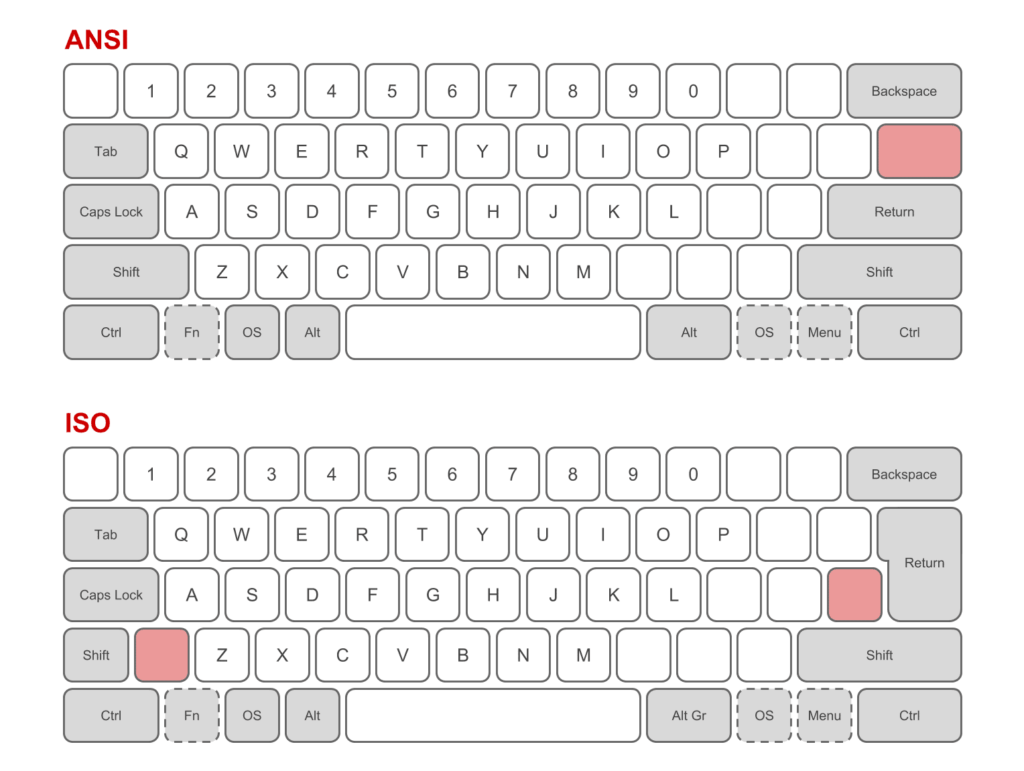Disclosure: Content linked in this article may be affiliate links. All that means is that I may earn a few pennies if you use the link and make a purchase – it helps me keep this site up 🙂 This post is not sponsored directly by these companies and only contains products that we genuinely love and recommend for any keyboard enthusiast. So thanks in advance if you choose to click!
Understanding the Difference Between ANSI and ISO Layouts
When it comes to computer keyboards, two main layouts reign supreme in the market: ANSI and ISO. Although they may appear similar at first glance, there exist subtle differences that can have a significant bearing on the user experience. In this article, we shall delve into the disparities between ANSI and ISO layouts, examining the advantages and disadvantages of each, providing valuable insights for users to make an informed decision as to- what hecking layout do I need?

What is ANSI Layout?
The ANSI (American National Standards Institute) layout is predominantly used in the United States and some other countries. It is characterized by a larger left shift key and a smaller enter key.
Pros of ANSI Layout
- ANSI layout is familiar to users in the United States. Most keyboards sold in the US follow the ANSI standard.
- This makes it easier for users to find ANSI replacement parts or switch between keyboards.
- ANSI layout offers a larger left shift key.
- This can be advantageous for touch typists who rely on the left shift key for capitalization.
Cons of ANSI Layout
- While the ANSI layout offers a larger left shift key, it comes at the cost of a smaller enter key.
- This can be inconvenient for users who frequently use the enter key, as they may accidentally press the adjacent backspace key instead.
- Users who switch from an ANSI layout to an ISO layout may find it challenging to adapt to the different key placements.
What is ISO Layout?
The ISO (International Organization for Standardization) layout is more prevalent in Europe and many other parts of the world. It features a larger return/enter key and a smaller shift key. The backspace key is also located above the enter key in the ANSI layout.
Pros of ISO Layout
- The ISO layout also offers a dedicated key for the backslash, which can be useful for programmers and users who frequently work with file directories.
- The ISO layout provides a larger enter/return key, which can be beneficial for users who frequently use the enter key.
Cons of ISO Layout
- The main drawback of the ISO layout is its smaller left shift key.
- This can lead to more typing errors, especially for touch typists who are accustomed to the larger shift key on ANSI keyboards.
- Switching from an ANSI layout to an ISO layout can also pose challenges for users, as they may need to relearn the placement of certain keys.
Ansi vs Iso Summary
Both ANSI and ISO layouts have their own advantages and disadvantages. If you are in the United States or are familiar with the ANSI layout, sticking with it may be the most convenient option. If you are in Europe or prefer the larger enter/return key, the ISO layout might be a better fit.
Discover more from The Keeblog
Subscribe to get the latest posts sent to your email.

